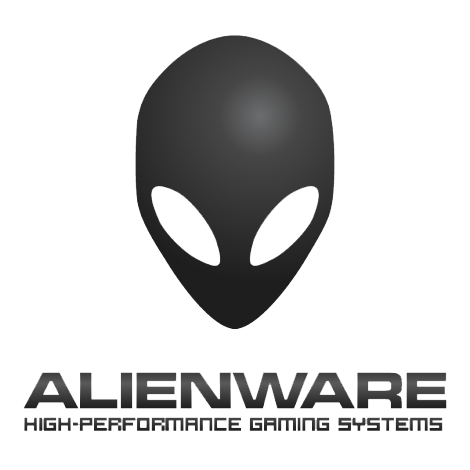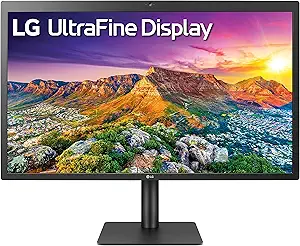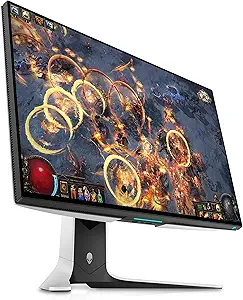In the world of monitors, LG and Alienware represent two formidable forces, each commanding a dedicated following among users seeking top-tier performance and innovation. As you venture into the realm of high-quality displays, the choice between LG and Alienware monitors can shape your computing experience, whether you're a professional seeking color accuracy or a gamer craving immersive visuals. Join us as we delve into the distinct characteristics and strengths of both brands to help you navigate the landscape and find the ideal monitor for your needs.
Key Features Comparison
Size
LG and Alienware both offer a range of monitor sizes to cater to different user needs. LG monitors range from compact 24-inch screens to large 43-inch displays. Their latest technology, the LG UltraFine Display, boasts a 32-inch screen size with 4K resolution, providing an immersive viewing experience. The larger monitors are ideal for multitasking and professional use, such as graphic design and video editing, where detail and screen real estate are crucial. However, they may be too bulky for small desk spaces. On the other hand, Alienware monitors are typically geared towards gaming and range from 24.5 inches to a massive 55 inches, like the Alienware 55 OLED Gaming Monitor. These larger sizes, combined with technologies like NVIDIA G-Sync and fast refresh rates, offer a highly immersive gaming experience. However, the larger Alienware monitors can be quite expensive and may not be necessary for casual users or those primarily using their monitors for work. Compared to LG, Alienware's focus on larger, high-performance monitors positions them as a premium brand in the gaming sector, while LG offers more variety for both general and professional use.
Panel Type
LG and Alienware monitors offer different panel types, each with its own strengths and weaknesses. LG monitors often utilize In-Plane Switching (IPS) panels, which are known for their superior color accuracy and wide viewing angles. This makes them ideal for graphic design, video editing, and other color-critical tasks. However, IPS panels typically have slower response times, which could be a disadvantage for competitive gaming. On the other hand, Alienware monitors often use Twisted Nematic (TN) or Vertical Alignment (VA) panels. TN panels have very fast response times and high refresh rates, making them a popular choice for gamers. However, they have poorer color accuracy and narrower viewing angles compared to IPS panels. VA panels, meanwhile, offer a middle ground between IPS and TN, with better color accuracy and viewing angles than TN panels, and faster response times than IPS panels. In terms of latest technologies, LG has been incorporating Nano IPS technology in their monitors, which involves the application of nanometer-sized particles to the screen’s LED to absorb excess light wavelengths, resulting in more intense and accurate colors. Alienware, on the other hand, has been focusing on speed and performance, with technologies like NVIDIA G-Sync and fast refresh rates up to 240Hz in their monitors. Compared to other brands, LG and Alienware stand out in their respective strengths: LG for color accuracy and Alienware for gaming performance.
Affordability
When it comes to the aspect of price, LG and Alienware monitors cater to different segments of the market. LG monitors, with their wide range of offerings, are generally more affordable and cater to a broader audience. They offer a variety of monitors that are suitable for everyday use, professional work, gaming, and more. For instance, their latest UltraFine series, which boasts 4K and 5K resolution, is competitively priced, making high-resolution displays more accessible to the average consumer. On the other hand, Alienware monitors are typically priced higher, targeting the premium segment of the market, particularly gamers. Alienware, a subsidiary of Dell, is renowned for its high-performance gaming hardware and its monitors are no exception. Their latest Alienware 25 Gaming Monitor (AW2521HF), for example, features a 240Hz refresh rate and 1ms response time, which are critical for competitive gaming. However, these high-end specifications come with a higher price tag compared to the average LG monitor. Despite the price difference, both brands are well-regarded in their respective markets and offer good value for money, depending on the specific needs and budget of the user.
Reputation
LG and Alienware are two highly reputable brands in the monitor industry, each with its unique strengths and weaknesses. LG, a South Korean electronics giant, has a reputation for producing high-quality, reliable monitors that offer excellent color accuracy and wide viewing angles, thanks to their IPS (In-Plane Switching) technology. Their monitors are often praised for their sleek design, energy efficiency, and advanced features like 4K resolution, HDR support, and USB-C connectivity. However, some users have reported issues with quality control and customer service. On the other hand, Alienware, a subsidiary of Dell, is renowned for its gaming-centric monitors that boast high refresh rates, low response times, and NVIDIA G-Sync or AMD FreeSync compatibility for smooth, tear-free gaming experiences. Alienware monitors are generally well-received for their robust build quality, futuristic design, and exceptional performance in fast-paced games. However, they tend to be more expensive than their LG counterparts, and their color accuracy and viewing angles might not be as good due to the use of TN (Twisted Nematic) or VA (Vertical Alignment) panels in some models. Compared to LG, Alienware's reputation leans more towards the gaming community, while LG has a broader appeal with its diverse range of monitors suitable for various uses.
Picture Quality
LG Monitors are known for their exceptional picture quality, particularly in their UltraFine series which offers 4K and 5K resolution monitors. These monitors are equipped with IPS (In-Plane Switching) panels that provide accurate and consistent colors from all viewing angles. LG monitors also support HDR10, which enhances the color and brightness of the display, bringing out the intricate details of the images. However, some users have reported minor issues with backlight bleeding on some models. On the other hand, Alienware monitors, a subsidiary of Dell, are primarily designed for gaming but they also provide excellent picture quality. Their monitors, such as the Alienware AW3420DW, feature a fast refresh rate and NVIDIA’s G-Sync technology, which can provide a smoother and more immersive gaming experience. The Alienware monitors come with IPS panels and WQHD (Wide Quad HD) resolution that offer vivid and sharp images. However, these monitors don't usually support HDR, which means they may not deliver as vibrant colors as some LG monitors. Compared to LG, Alienware monitors are more focused on speed and performance rather than color accuracy, making them more suitable for gamers rather than graphic designers or video editors.
Connectivity
LG monitors are renowned for their diverse connectivity options, which are designed to cater to a wide range of user needs. Most models, including the latest LG UltraFine series, come equipped with multiple HDMI and DisplayPort inputs, allowing for simultaneous connection of several devices. Additionally, they also offer USB Type-C ports, which support video, data transfer, and power delivery, making them ideal for users who wish to declutter their workspace. However, some users have reported issues with the reliability of LG's USB-C ports over time. On the other hand, Alienware monitors, known for their gaming-centric features, also offer a variety of connectivity options. The latest models, such as the Alienware AW3420DW, feature HDMI and DisplayPort inputs, multiple USB 3.0 ports, and a headphone jack. However, unlike LG, Alienware monitors do not typically include a USB-C port. This could be a drawback for users looking for a more versatile connection, particularly those using newer laptops and devices that favor USB-C. Despite this, Alienware's connectivity options are generally praised for their robustness and reliability, particularly in high-intensity gaming scenarios.
Production Selection
LG and Alienware both offer a wide variety of monitors, each with their own unique features and technologies. LG monitors are known for their diverse range, offering monitors for everyday use to high-end models designed for gaming and professional use. They incorporate the latest technologies such as Nano IPS, which provides accurate color and a broader contrast ratio, and 1ms Motion Blur Reduction. LG's UltraGear™ line is specifically designed for gamers, featuring high refresh rates and NVIDIA G-Sync™ technology. However, some users have reported issues with quality control and customer service with LG. On the other hand, Alienware monitors are primarily focused on gaming. They offer models with high refresh rates, fast response times, and NVIDIA G-Sync or AMD FreeSync technology for smooth gameplay. Alienware's monitors are praised for their build quality, unique design, and excellent gaming performance. However, they tend to be more expensive than other brands, and their product range is not as diverse as LG's, offering fewer options for non-gaming use. Alienware's AlienFX customizable lighting adds an extra touch for gamers, but may not be as appealing for those looking for a more professional aesthetic.
Related Videos
Conclusion
LG and Alienware monitors both offer top-of-the-line features and technologies that cater to different types of users. LG monitors are known for their IPS (In-Plane Switching) technology, which provides excellent color accuracy and wide viewing angles. They also offer a variety of models with 4K resolution and HDR support, making them suitable for professional photo and video editing. On the other hand, Alienware monitors are more geared towards gaming. They offer high refresh rates (up to 240Hz), low response times, and support for G-Sync or FreeSync, which can significantly improve gaming experience. However, both brands have their own set of drawbacks. Some users have reported that LG monitors have a lower contrast ratio compared to other brands, which can result in less vibrant black levels. Alienware monitors, while excellent for gaming, are often more expensive than their counterparts from other brands. They also tend to have a more aggressive design, which may not appeal to everyone. In comparison to other brands, LG and Alienware stand out for their specific strengths - LG for its color accuracy and Alienware for its gaming capabilities. However, the choice between the two would largely depend on the specific needs and budget of the user.




















